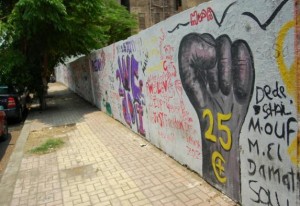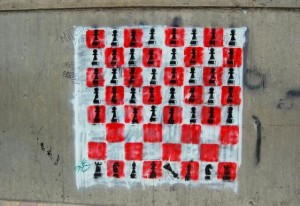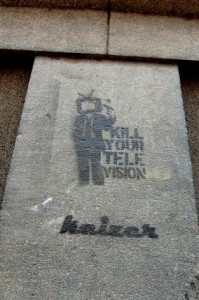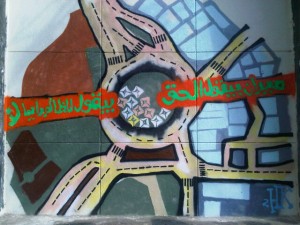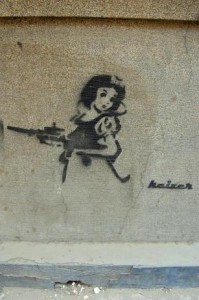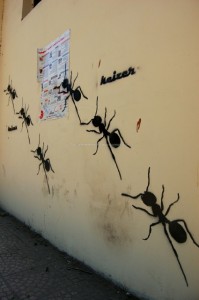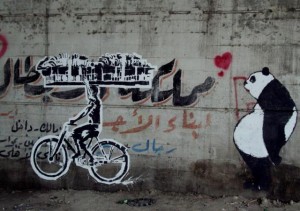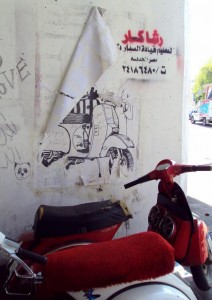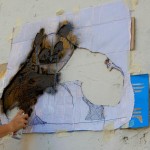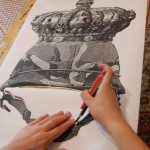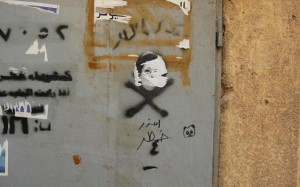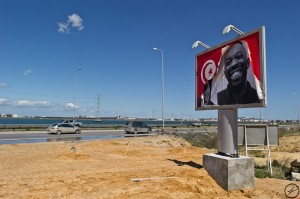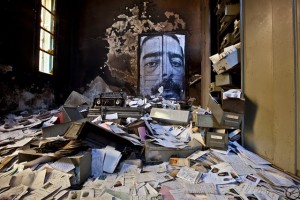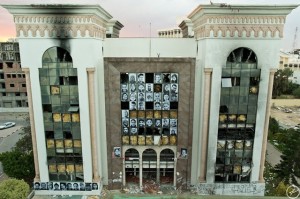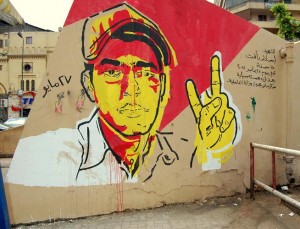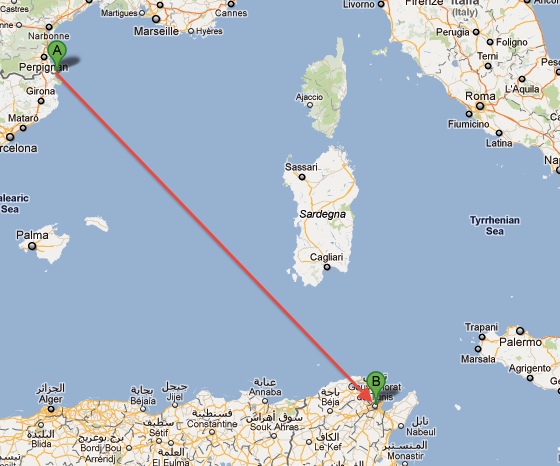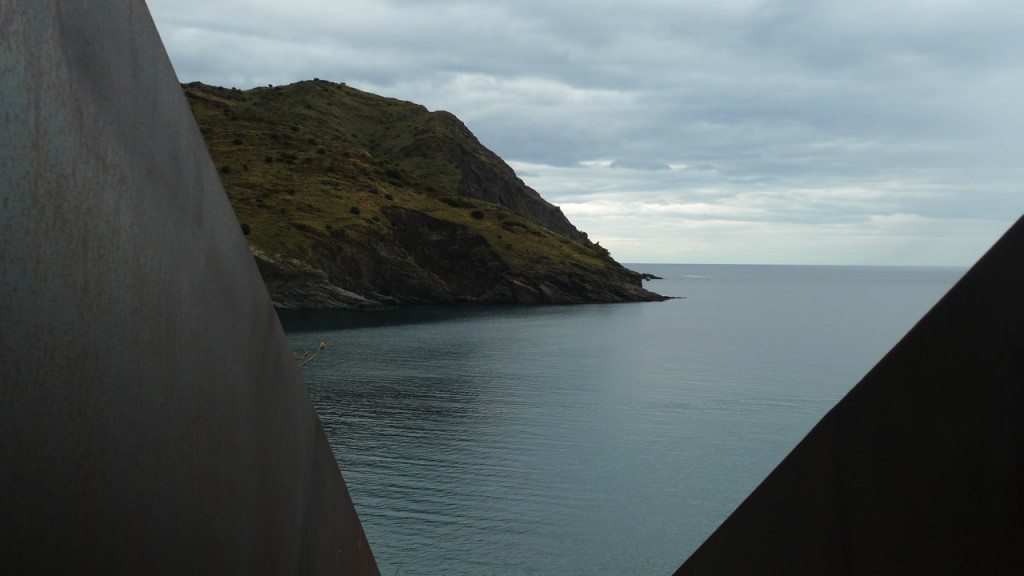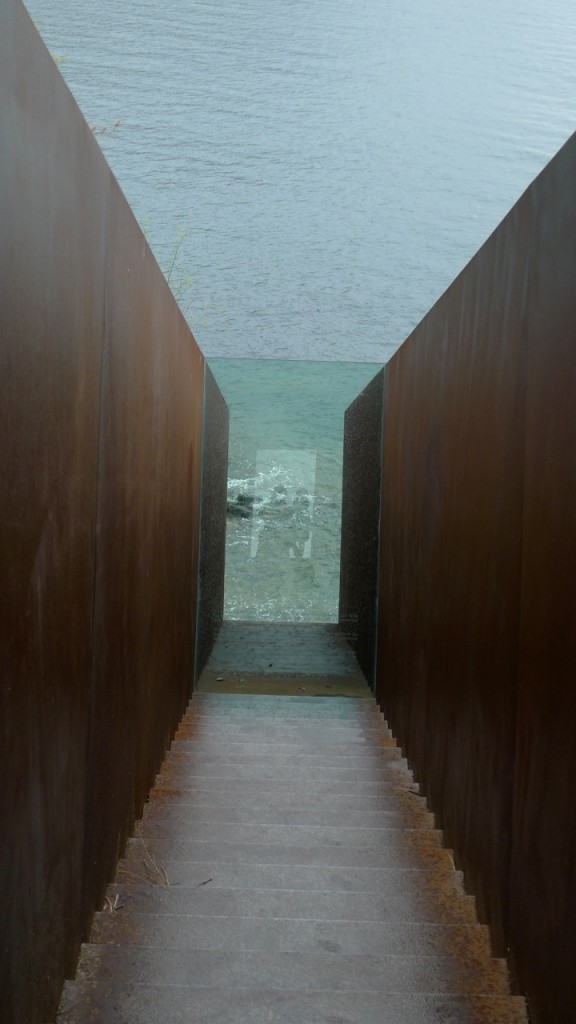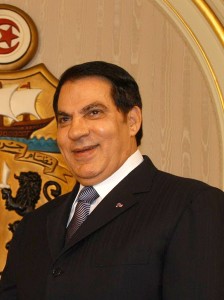Watching the Egyptian revolution for the past year has been an extraordinary experience. First we watched live online via al-Jazeera, when the feed held. We saw photographs posted to websites, blogs, Flickr and elsewhere. We read all we could of the blogs. And we learned about the dynamic forms of Cairo street art. From this distance I can’t pretend to any expertise but I am moved and inspired by this work.
It’s clear from what we can see online and what information there is in English on blogs like ArabStand that street work by artists like Keizer, Sad Panda and Ganzeer is strongly interfaced with that of well-known Anglo-American artists like Banksy or Shephard Fairey. In the Egyptian street art community these references are clearly appreciated. For all the real difficulties that the Western tagger confronts, the Egyptian context has nonetheless vastly more dangers and hazards. It’s clear too that the end of the dictatorship made it briefly far more feasible to work outdoors. How the recent crackdown by SCAF will impact their projects is less clear.
When we look at the streetscape of Mahmoud Street, Cairo, that leads from Tahrir to the Interior Ministry today, there’s a palpable sense of the change:
This isn’t graffiti in the derogatory sense: it’s a street gallery and a reclamation of space that says: “Whose streets? Our streets!” In this crucible of countervisualization, a number of artists have become prominent.
El Teneen’s visualization of the revolution as a chess game and Keiser’s Situationist reference might be seen in other cities, albeit with different references. Tahrir is a new way for the anonymous to visualize their history, a place that so few outside Cairo had heard about a year ago.
Keiser’s work has a sharp political edge, as in his détournement of Disney’s Snow White:
In more allusive fashion, he visualizes the people as ants, not as pests but as determined and energetic collaborators working for the collective good:
On one wall in the Zamalek district of Cairo, there’s an interesting confrontation between two very distinct styles of work.
Left is Ganzeer’s work, clearly learning from Banksy, with a witty sense of how the new city is being carried by the person in the street. At right is Sad Panda, the work of an artist known only as Hatem. Before January 25 2011, Sad Panda worked in secret.
Today his work is widespread and he shared with the blogger who posts as Suzee in the City how he makes his work by creating stencils:
Sad Panda is a multiply-repeated icon whose presence calls attention to the places where it appears and that which it looks at. By dint of repetition and familiarity, the Sad Panda reterritorializes the city. The Panda has become known by the metonym of its eyes, as if to say, you may be watching us but we can and do watch you back.
In this complex cityscape, an image of the former dictator’s wife, Suzanne Mubarak, is watched by the Panda at bottom right and a text warns of “danger.” It’s up to you to associate the pieces in this visualization in the same way that any city dweller constantly interprets and reinterprets the built and socialized environment. This metonym serves as a means to represent the claim of the right to look, which works precisely because it requires us to notice it, decipher its look and the relation to the other it invents and the one it refuses.
More on Egypt and countervisuality tomorrow, the anniversary.

